- Product development
- 26 Sep 2024
Software as a Service (SaaS) pricing models [Explained + Real examples]
Software as a service pricing is all about making sure that your users believe the service is worth the pay.
![Software as a Service (SaaS) pricing models [Explained + Real examples]](https://www.beecoded.io/wp-content/uploads/2024/09/Understanding-SaaS-Pricing-Models_-Insights-and-Real-World-Examples.png)
![Software as a Service (SaaS) pricing models [Explained + Real examples]](https://www.beecoded.io/wp-content/uploads/2024/09/Understanding-SaaS-Pricing-Models_-Insights-and-Real-World-Examples.png)
![Software as a Service (SaaS) pricing models [Explained + Real examples]](https://www.beecoded.io/wp-content/uploads/2024/09/Understanding-SaaS-Pricing-Models_-Insights-and-Real-World-Examples.png)
Table of contents
Contributors

Pricing software as a service—what are the strategies?
Pricing models for SaaS applications are key to effective monetization. In this guide, we’ll show you how to build the ideal pricing strategy for your B2B SaaS business. From understanding SaaS cost models to exploring dynamic pricing strategies, we’ll provide examples from top software providers.
A value-based approach ensures that users see the service as worth the cost, benefiting both your business and customers. Flexibility in choosing the right pricing model for different customer segments is crucial to growing your user base and increasing profits.
For sure, before starting to put together your strategy, you should take some time to research the latest and most popular SaaS pricing trends.
For example, according to a 2021 survey by OpenView, only 39% of SaaS businesses go for a value-based pricing strategy, while 27% trusted their own judgment regarding their SaaS pricing plans and 24% got inspired by their competitors’ pricing.
You need to have a clear view of the differentiating factors of your business, what matters most to your users, and how they’ll use what you’re offering, all while keeping your eye on the market and being ready to shift prices accordingly to your service growth.
Now, let’s see what’s so different between SaaS pricing plans and other pricing models.
SaaS pricing plans vs. other pricing models
Software pricing has been going through a pretty big shift in the past few years, as most B2B SaaS companies offer a flexible subscription-based plan with ongoing support and updates instead of a big one-time payment. This requires long-term user satisfaction, which you gain by adapting both your solution and the pricing to their needs.
The major differences a SaaS pricing model brings to its customer base are:
- Focus on the life-cycle of the customer relationship: By maximizing the value your customer receives over time, you encourage ongoing use of your platform and create new upselling opportunities.
- Data-driven pricing models: Having access to customer data, like tracking the interactions within your software and the popularity and usage of particular features, opens the way to building a pricing strategy in accordance with actual user patterns.
- Dynamic pricing: Tied to data-driven decision-making, you can easily adjust your SaaS pricing more frequently in order to match the market feedback and demand, while traditional pricing models require long update cycles in order to justify the price change of the products.
- Operational costs: The recurring SaaS payment models require very careful operational cost management in order for you to maintain healthy profit margins. By making strategic decisions regarding the infrastructure investments, you can significantly impact your profitability.
- Customer retention and churn rate: The churn rate is one of the most important KPIs to follow when marketing SaaS, as it represents the percentage of customers that stop doing business with your company over a period of time. Your goal is finding the perfect balance between a price that reduces churn while highlighting the full value of your services.
- Value proposition: You must make sure your SaaS pricing model is in accordance with the service’s value proposition—bundle the features in a way that highlights the link between the perceived value and the challenges your software solves.
- Continuous monetisation: As your product evolves over time, you should adapt your SaaS subscription pricing to monetise the new features and services without interfering with already existing customers’ experiences, which may be used in their original subscription plan version.
Types of SaaS (software-as-a-service) pricing models
Let’s explore seven major types of SaaS pricing models, examining their pros and cons, to help you identify the best approach for marketing, selling, and growing your SaaS product while finding the best balance between value and revenue.

SaaS pricing models examples
Flat Rate Pricing:
- Zoom: Zoom’s video conferencing service offers flat rate pricing for its Zoom Rooms plan, which is designed to run on hardware and appliances as a dedicated meeting environment for shared spaces (such as conference rooms) for a fixed monthly fee.
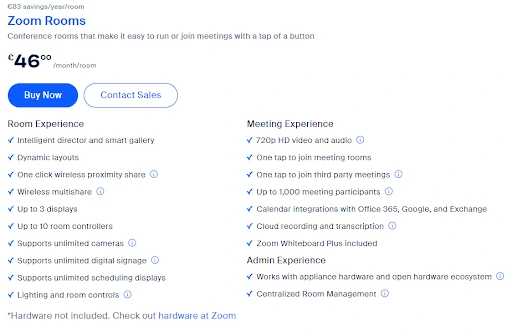 Source: Zoom
Source: Zoom
Usage-Based Pricing:
- Twilio: Twilio charges based on usage for its communication APIs, such as the number of SMS messages sent or voice call minutes used.
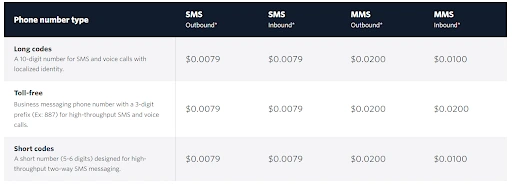 Source: Twilio
Source: Twilio
Tiered Pricing Strategy:
- HubSpot: HubSpot offers a tiered SaaS cost model pricing for its marketing, sales, and service hubs. Enterprise plans range from Professional to Enterprise, with each tier offering increasingly advanced features and capabilities.
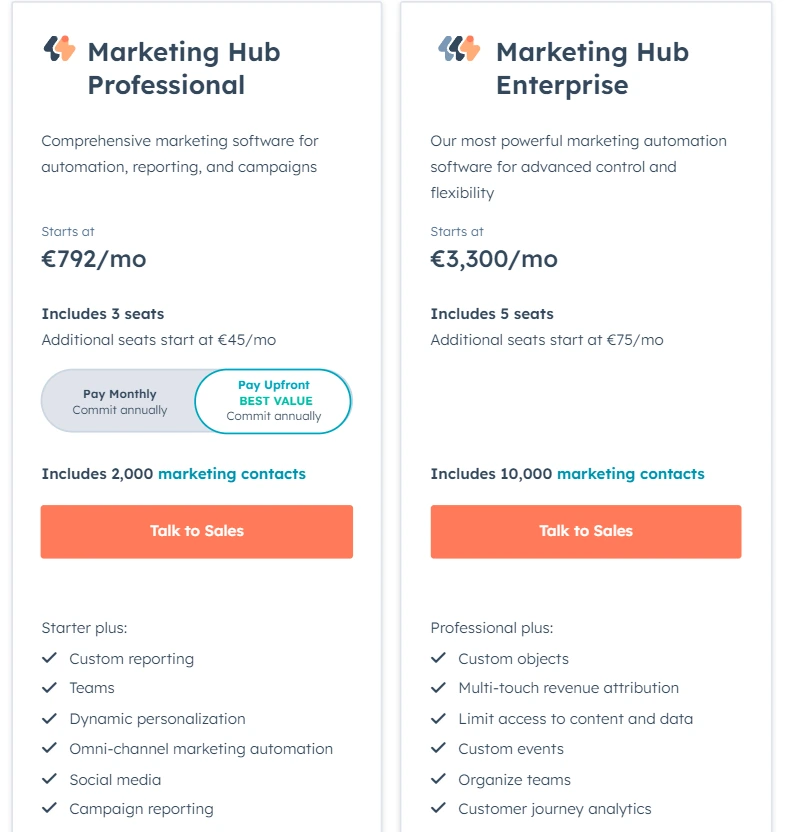 Source: Hubspot
Source: Hubspot
Per-User Pricing:
- Asana: Asana’s task and project management software uses a per-user pricing model.
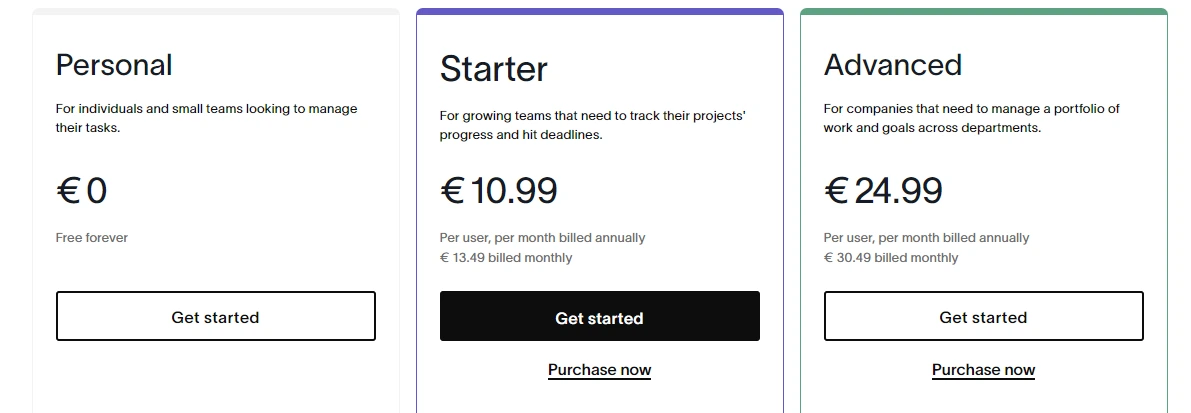 Source: Asana
Source: Asana
Per Active User Pricing:
- Monday.com: Monday.com offers a pricing model where you pay based on the number of seats on the platform. This model ensures you only pay for users who are actively engaged with the system. They also have a SaaS B2B pricing model, offering personalised prices for enterprises.
 Source: Monday
Source: Monday
Per Feature Pricing:
- FreshBooks: FreshBooks provides pricing based on the features you choose, such as invoicing, time tracking, and expense management. You can select from different plans that offer various features at different price points and pay for extra add-ons.
 Source: FreshBooks
Source: FreshBooks
Freemium Business Model:
- Canva: Canva offers a freemium SaaS business model pricing where users can access a range of design tools and templates for free, but premium features, additional templates, and advanced functionalities are available in paid plans.
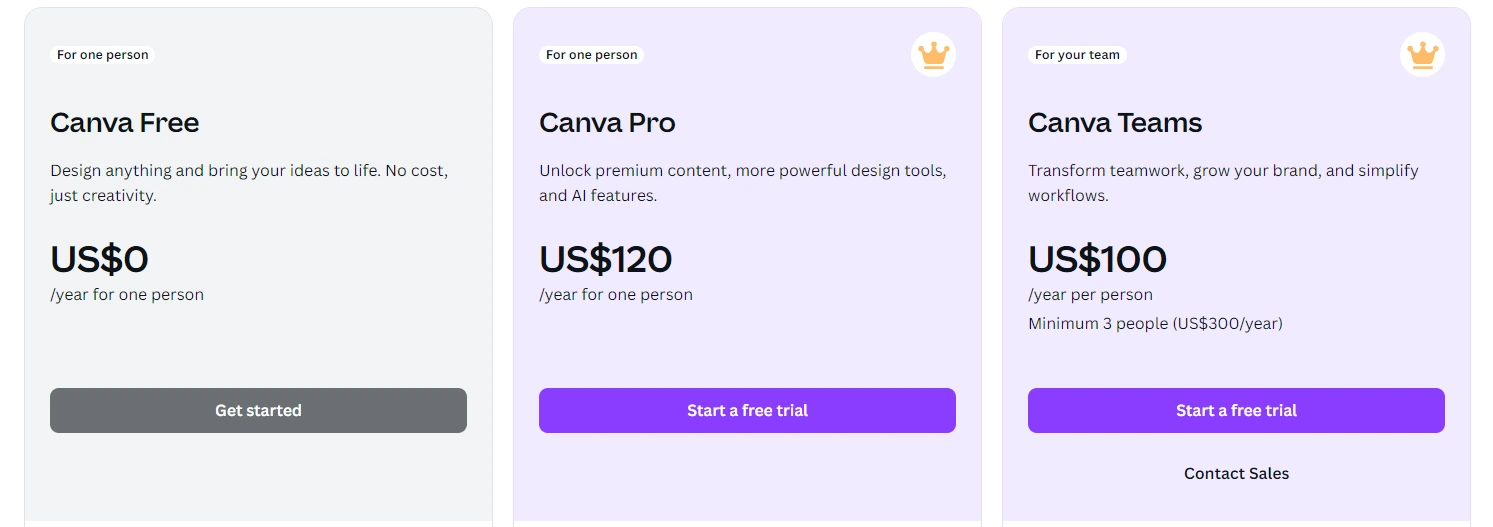 Source: Canva
Source: Canva
So, when it comes to SaaS business model pricing, be sure to take into consideration your target audience and their preferences, and don’t forget to check out your competitors’ types of SaaS pricing models.
How to choose the right SaaS pricing strategy
We’ve listed the 7 most common revenue models and pricing strategies in the B2B SaaS market to offer a clear vision of what each of these strategies entails, so you can figure out which one works for your business model.
1) Penetration Pricing
Penetration pricing is a strategy that involves lowering prices in order to quickly gain market share and secure you the “first mover” advantage.

- Initial Price: The standard price you would typically charge.
- Discount Factor: A percentage reduction to attract customers (e.g., 0.7 for a 30% discount).
2) Captive Pricing
Captive pricing is the practice of offering a “core” product at a lower-than-expected price while charging more for additional products required to maximize the core product’s value.
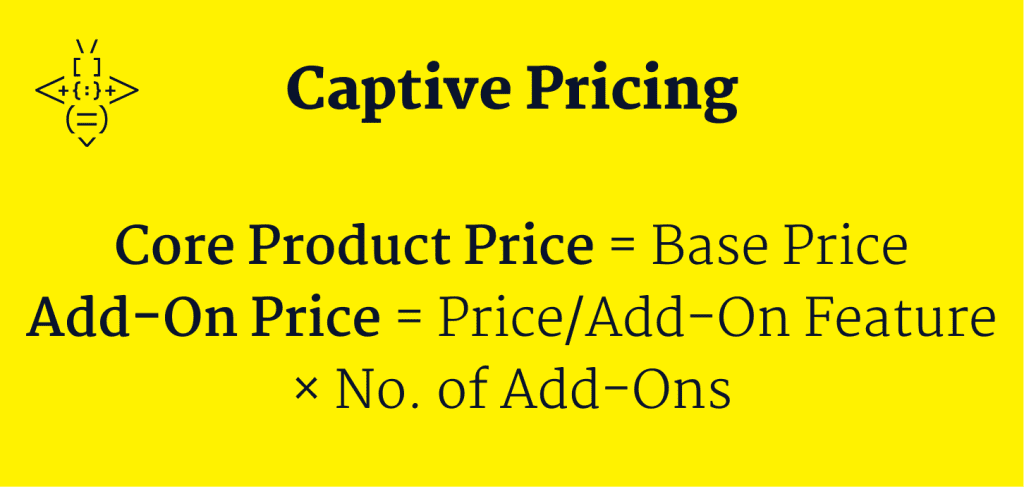
- Base Price: Lower price for the core product.
- Price per Add-On Feature: Cost of additional features or products.
3) Skimming Pricing
Skimming pricing is the strategy of setting a high initial price for a new product and then gradually lowering it over time. This not only will liven up your user base, but it will offer a lot of potential for a dynamic pricing SaaS strategy.
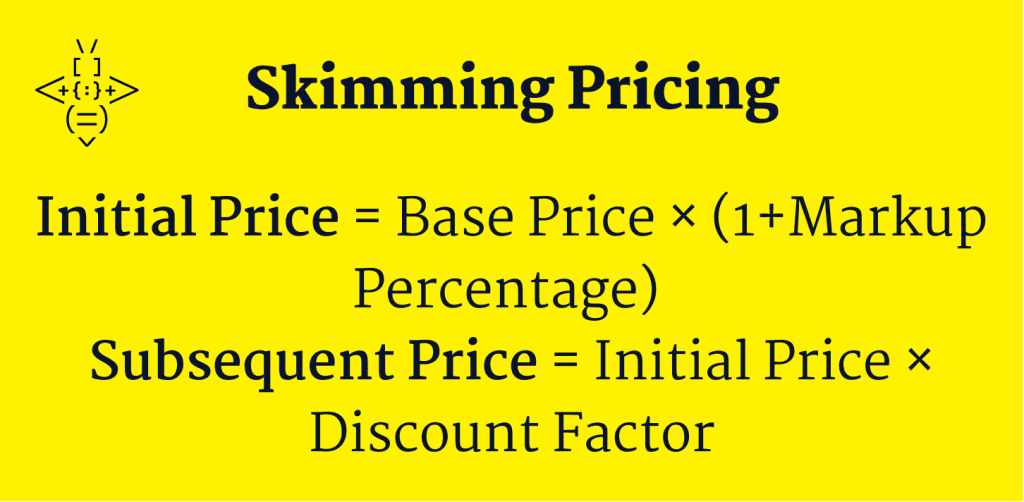
- Base Price: The cost to produce or acquire the product.
- Markup Percentage: High initial markup to recoup early adopters.
- Discount Factor: Reduction applied over time (e.g., 0.9 for a 10% reduction).
4) Prestige Pricing
Prestige pricing is the practice of keeping prices high in order to convey a sense of quality, exclusivity, or luxury. As a SaaS B2B pricing model, this allows businesses to maintain a relatively small customer base of high-value customers, who would likely abandon the brand if prices were to fall.
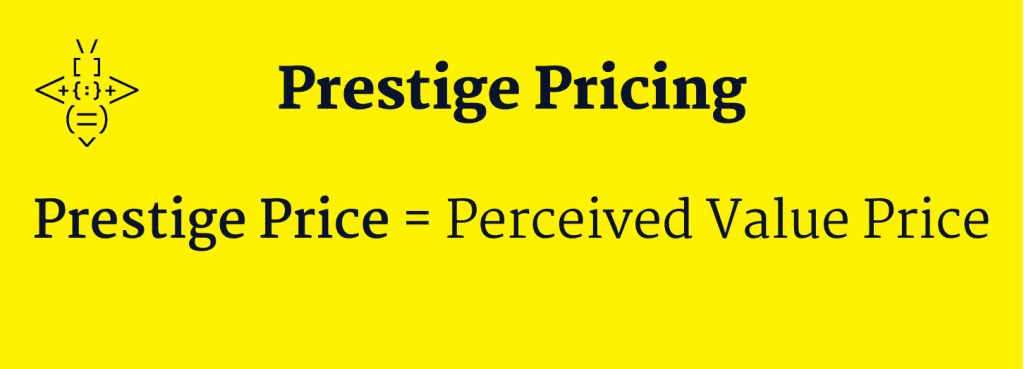
- Perceived Value Price: The price was set high to maintain exclusivity and quality perception.
5) Free Trial Pricing
You provide yourself with a fast entry by giving the product away for free for a brief period of time. Consumers will not have to pay anything to begin using your product, and if they find it useful during the trial period, they will have a strong initiative to upgrade after it expires.
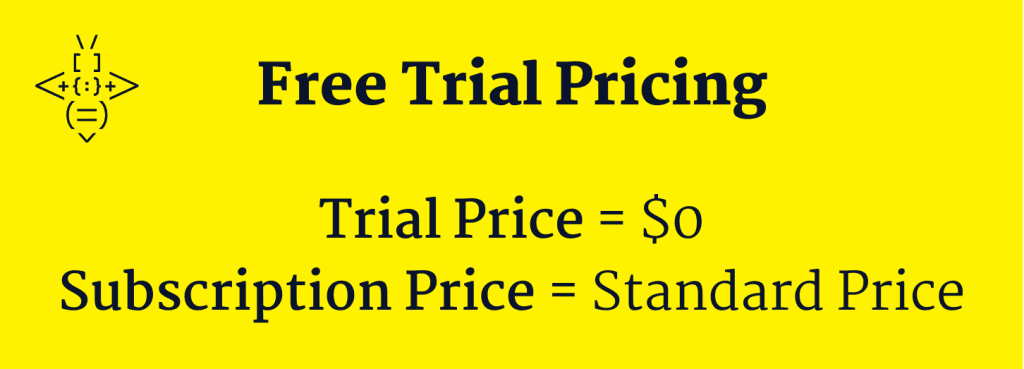
- Trial Price: Free during the trial period.
- Subscription Price: Standard price after the trial period ends.
6) Cost Plus Pricing
Cost plus pricing refers to the process of adding a target profit margin, such as 20%, to the costs associated with developing, marketing, and selling a product. This amount is then used to determine the price of the product.
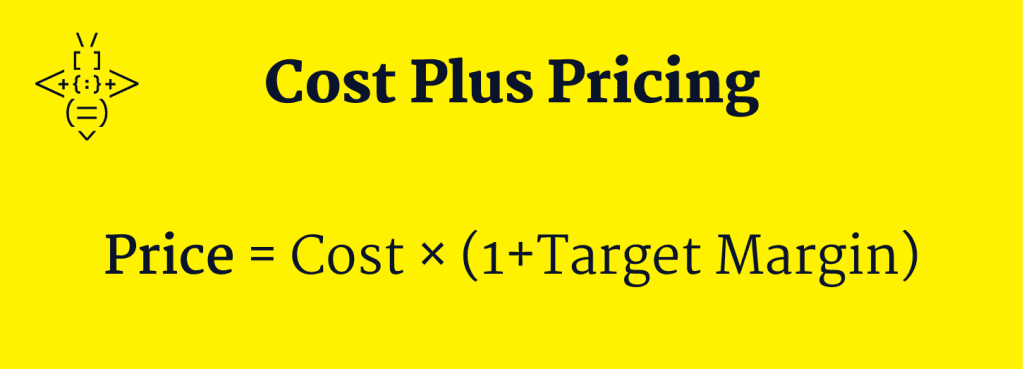
- Cost: Total costs for development, marketing, and selling.
- Target Margin: Desired profit margin (e.g., 0.20 for 20%).
7) Value-Based Pricing
Value-based pricing sets prices based on the product’s perceived value rather than on expenses, competition, or target margins.
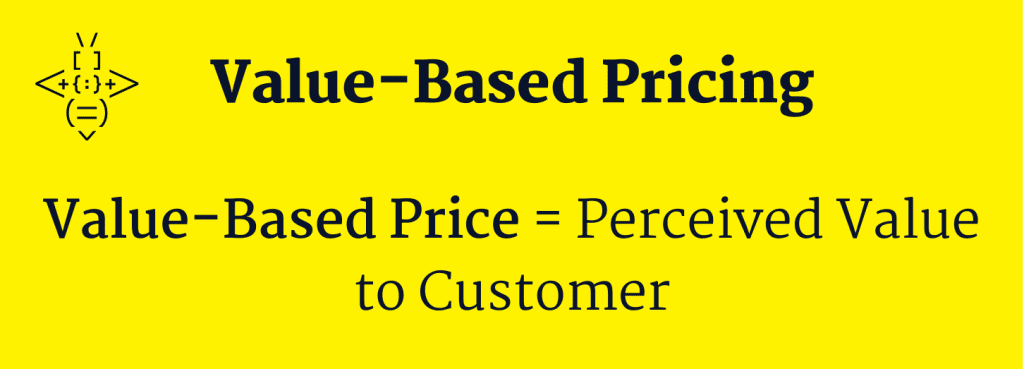
- Perceived Value to Customer: Price based on how much value the product delivers to the customer rather than the cost or competition.
SaaS pricing best practices
Pricing your SaaS product effectively can make or break your business, so we put together this infographic that highlights key best practices to help you get it right.
Start by evaluating your product’s value and understanding your customer segments, ensuring your pricing reflects the needs and expectations of your target market. Analyzing competitor pricing and assessing your market position help you stay competitive. Consider your costs and profit margins while planning for future pricing evolution. Finally, experimenting with different pricing models can uncover the most profitable approach.

SaaS Pricing Trends
Artificial Intelligence and Data-Driven Pricing
- Using data analytics and artificial intelligence to maximize pricing strategies is becoming more common. Companies are using machine learning techniques to maximize pricing, project customer behavior, and make instant changes.
- AI-driven pricing guarantees companies remain competitive by constantly changing prices depending on demand, competition, and other factors, therefore optimizing income. This raises profitability.
Hybrid Pricing Strategies
- Businesses increasingly employ hybrid pricing strategies, which combine elements of many pricing strategies. These include usage-based payments on top of a base subscription price. Another option is tiered pricing, where customers pay separately for additional capabilities.
- Hybrid models offer greater flexibility. They help meet a wide range of consumer needs. This approach maximizes income sources and attracts a diverse range of clients, helping to retain them as well.
Greater Attention to Client Success
- Companies are increasingly tying pricing policies to customer performance. Some even connect price to specific outcomes or offer money-back guarantees.
- Coordinating pricing with customer success helps companies to improve customer retention, cut attrition rates, and deepen their ties to them.
Simplicity and Subscription Fatigue
- As consumers become tired of subscriptions, SaaS companies have streamlined their pricing schemes to improve transparency and lower uncertainty.
- For instance, Slack adjusted to offer greater accessibility after realizing that the complexity of their pricing was overwhelming consumers. To maintain customer loyalty, they developed a ‘pay-for-what-you-use’ model. This charges based on active users rather than all registered users. It offers more predictable and transparent pricing, resolving customer complaints about confusing fees and helping to preserve loyalty.
- Simplified pricing helps consumers to understand what they are paying for, thereby enhancing the customer experience and maybe reducing turnover while increasing satisfaction.
Outsourcing vs. In-house Development: Why Romania is the Best Middle Ground
The Talent Pool in Romania: Why Global Companies Hire Developers Here
The Real Cost of Software Outsourcing: Why Romania Offers the Best ROI